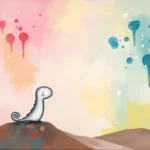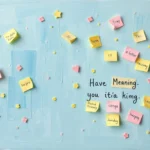
Dreams have long fascinated humanity, serving as a portal to our subconscious mind and revealing the intricate workings of our thoughts, fears, and desires. Among the myriad of dream themes, those that involve the visual cortex—the part of the brain responsible for processing visual information—are particularly intriguing. These dreams often engage our senses in ways that can feel profoundly real, inviting us to explore their deeper meanings. Understanding dreams related to the visual cortex can help us uncover hidden emotions and insights, making the subject all the more relevant in our quest for self-awareness.
Symbolism and Meaning
Dreams involving the visual cortex can manifest in various forms, often filled with vivid imagery and striking symbolism. One common aspect of such dreams is the presence of bright colors or detailed scenes, which can suggest heightened awareness or a longing for clarity in waking life. The color itself is significant; for example, red may symbolize passion or anger, while blue could represent calmness or sadness. This vividness can indicate a need for the dreamer to pay attention to their surroundings or emotions that may be overlooked in their waking life.
Another prevalent symbol in dreams linked to the visual cortex is vision impairment or blurriness. Experiencing difficulty seeing in a dream may reflect feelings of confusion or a lack of direction. This visual distortion can symbolize a dreamer’s struggle to understand their current circumstances or emotions. The inability to see clearly might prompt introspection about what aspects of life are unclear or challenging.
Mirrors or reflections often appear in these dreams as well. They can represent self-examination, self-image, or the desire to confront parts of oneself that have been ignored. When a dreamer sees themselves in a mirror, it may indicate a need for self-reflection or an exploration of identity. The clarity or distortion of the reflection may further suggest how the dreamer perceives themselves in their waking life.
In addition, the presence of light and darkness can serve as powerful symbols in visual cortex dreams. Light often symbolizes enlightenment, knowledge, or a breakthrough, while darkness may represent fear, ignorance, or the unknown. The interplay between these elements can reveal the dreamer’s internal struggle between understanding and confusion.
Key Scenarios and Variations
The context of dreams related to the visual cortex can vary widely, leading to different interpretations. One common scenario involves dreams of flying, where the dreamer experiences the exhilaration of soaring through the sky. This can symbolize a newfound sense of freedom or perspective in waking life, suggesting that the dreamer is ready to rise above challenges and gain insight into their circumstances. The clarity of vision while flying may also indicate a strong sense of purpose or direction.
Conversely, dreams where one is lost in an unfamiliar place can evoke feelings of anxiety and uncertainty. In this scenario, the dreamer may struggle to find their way, symbolizing a lack of control in their waking life. The dreamer’s inability to navigate the environment may reflect their emotions or challenges they are currently facing. This dream variation can serve as a wake-up call to address feelings of being overwhelmed or lost.
Another fascinating scenario involves dreams of observing art or beautiful landscapes. These dreams often evoke strong emotions and can symbolize a need for inspiration or a deeper appreciation for life’s beauty. The vividness of the colors and details can signify the dreamer’s desire to reconnect with their creative side or to find joy in the mundane aspects of life. Such dreams may encourage individuals to seek out new experiences or to embrace their artistic inclinations.
Nightmares that involve distorted or frightening imagery can also be linked to the visual cortex. These dreams may reflect underlying fears or unresolved trauma. The intensity of the visuals can amplify the emotional weight of the nightmare, signaling the dreamer to confront their anxieties. It’s essential for individuals who experience such dreams to examine their feelings and consider addressing any real-life issues that may be contributing to their distress.
Additionally, lucid dreams—where the dreamer is aware that they are dreaming—often provide an opportunity to explore the visual cortex in a unique way. In these dreams, individuals can manipulate their surroundings and experiences, which may signify a desire for control in waking life. The clarity and vividness of these dreams can serve as a reminder of the power of the mind and the potential for self-discovery.
Real-Life Connections and Takeaways
Connecting dreams involving the visual cortex to real-life situations can provide profound insights. When reflecting on such dreams, it’s helpful for individuals to consider their current emotional state and circumstances. Are there areas in life where they feel lost or confused? Are they experiencing a lack of clarity or direction? By addressing these questions, dreamers can begin to unravel the layers of meaning behind their dreams.
Keeping a dream journal can be a beneficial practice for individuals who wish to explore their dreams further. By recording details about the dream, including emotions, colors, and any symbols that stood out, individuals can identify patterns and recurring themes. This practice not only aids in understanding dreams better but also encourages self-reflection and personal growth.
Engaging in mindfulness practices can also help individuals connect their dreams with their waking reality. Techniques such as meditation or visualization can enhance awareness and understanding of one’s thoughts and feelings. By cultivating a sense of presence, individuals may find it easier to navigate the complexities of their emotions, leading to a clearer understanding of the messages their dreams convey.
Furthermore, exploring creativity through artistic expression can be a powerful way to tap into the symbolism of dreams related to the visual cortex. Whether through painting, writing, or other forms of art, individuals can channel their emotions and insights into tangible creations. This process not only fosters self-discovery but also encourages individuals to embrace their unique perspectives and experiences.
It’s vital to recognize that dreams are highly personal and subjective. While certain symbols and scenarios may carry general meanings, each dreamer brings their unique context and emotional landscape to their dreams. Therefore, it’s essential for individuals to reflect personally on their dreams and consider what resonates with them on a deeper level.
Ultimately, dreams connected to the visual cortex invite us to explore the intricate relationship between our subconscious mind and our waking life. By examining the symbols, scenarios, and emotions within these dreams, we can gain valuable insights into our fears, desires, and the challenges we face. Embracing this exploration not only enriches our understanding of ourselves but also empowers us to navigate the complexities of life with greater clarity and purpose.
In conclusion, the visual cortex plays a crucial role in shaping our dreams, allowing us to engage deeply with our thoughts and emotions. By interpreting the symbols and scenarios presented in these dreams, we can uncover hidden truths and gain clarity about our waking lives. As we reflect on our dreams, let us remember that they are not merely fragments of our sleep but powerful tools for self-discovery and growth.







